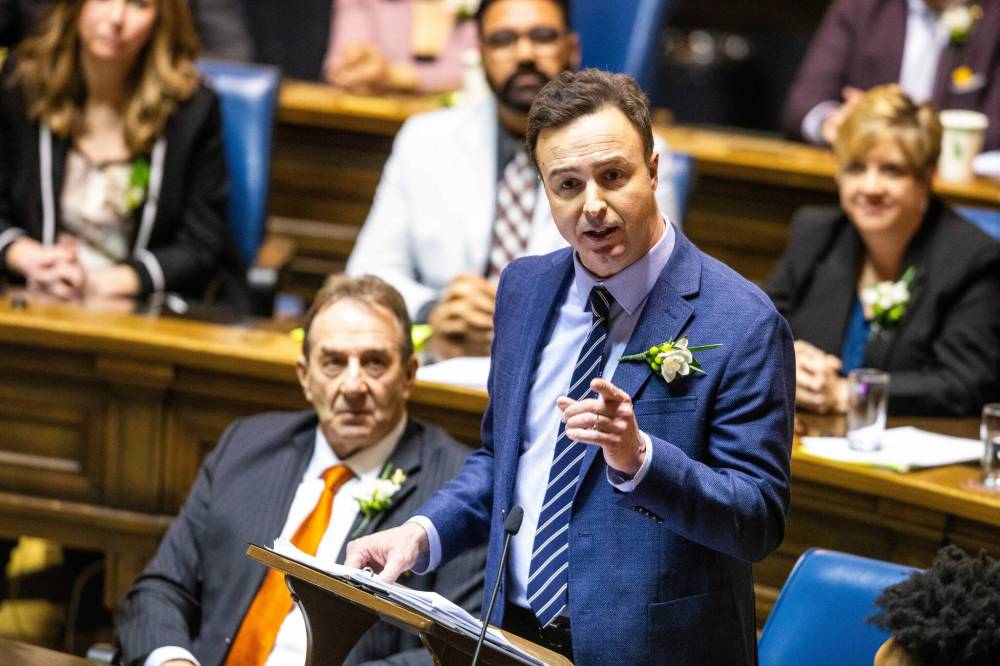Reaching for the win-win-win
Advertisement
Read this article for free:
or
Already have an account? Log in here »
To continue reading, please subscribe:
Monthly Digital Subscription
$1 per week for 24 weeks*
- Enjoy unlimited reading on winnipegfreepress.com
- Read the E-Edition, our digital replica newspaper
- Access News Break, our award-winning app
- Play interactive puzzles
*Billed as $4.00 plus GST every four weeks. After 24 weeks, price increases to the regular rate of $19.00 plus GST every four weeks. Offer available to new and qualified returning subscribers only. Cancel any time.
Monthly Digital Subscription
$4.75/week*
- Enjoy unlimited reading on winnipegfreepress.com
- Read the E-Edition, our digital replica newspaper
- Access News Break, our award-winning app
- Play interactive puzzles
*Billed as $19 plus GST every four weeks. Cancel any time.
To continue reading, please subscribe:
Add Free Press access to your Brandon Sun subscription for only an additional
$1 for the first 4 weeks*
*Your next subscription payment will increase by $1.00 and you will be charged $16.99 plus GST for four weeks. After four weeks, your payment will increase to $23.99 plus GST every four weeks.
Read unlimited articles for free today:
or
Already have an account? Log in here »
Hey there, time traveller!
This article was published 27/09/2024 (384 days ago), so information in it may no longer be current.
In politics and a public-policy setting, the most desirable outcome of any agenda or initiative is the creation of what is colloquially referred to as “a win-win situation.”
The term refers to a scenario in which competing, or perhaps even contradictory, interests are in play, but a solution is arrived at that somehow satisfies the needs and wants of multiple stakeholders.
Win-win. It doesn’t happen often, but when it does, it should be recognized as an exercise in planning, collaboration, compromise and execution.

Mikaela MacKenzie / Free Press files
Finance Minister Adrien Sala
With its just-announced affordable-energy plan, Manitoba’s government is looking to achieve the almost unthinkable, by creating a multi-tiered plan with to produce a result that isn’t just win-win, but could actually turn out to be win-win-win.
The initiative contains seven objectives aimed at keeping hydro rates “affordable” for Manitobans while expanding the public utility’s capacity and reducing the province’s greenhouse-gas emissions.
The centrepiece of the plan is a proposal to create “nation-to-nation” wind-power partnerships with First Nations and Métis governments, with the goal of creating projects that are majority-owned (51 per cent) by Indigenous interests and will generate up to 600 megawatts of power.
Manitoba Hydro will issue an expression of interest for the projects, and a loan-guarantee program will be included in the provincial NDP government’s 2025 budget.
“We’ve put forward a plan here that proposes a new way forward of building new capacity, specifically through nation-to-nation partnerships … to ensure that we can keep energy rates as low as possible,” Finance Minister Adrien Sala said last week after the plan’s unveiling.
Manitoba Métis Federation president David Chartrand said his organization is “ready to go” with the wind-farm plan, having already begun the process of acquiring land and consulting with companies that provide wind-power technology and equipment.
The affordable-energy plan also includes measures to increase energy efficiency, incentivize electric-vehicle use, update building codes to create more energy-friendly homes and provide greater oversight of the oil and gas sector.
While critics, both within and outside the legislature, were quick to dismiss the announcement as long on speculation and decidedly short on details and specific cost projections, the plan does provide a framework that could allow the province to move toward a goal Premier Wab Kinew set for his government after last fall’s election: to make Manitoba’s energy grid net-zero by 2035.
Were it to live up to its very lofty aspirations, the plan would increase capacity while at the same time accelerating the shift toward sustainable energy sources, and would help keep a lid on hydro rates while strategically advancing the ongoing process of reconciliation in a meaningful and potentially lucrative fashion.
The devil, of course, is in the details. And it’s up to Kinew and his government to respond in a prompt and forthright fashion to the concerns of those who rightly point out that crucial information such as cost projections and specific timelines were conspicuously absent from the announced plan.
The premier’s rather glib answer to a question about how the province will pay for the billions of dollars in necessary repairs and maintenance to Manitoba Hydro’s existing infrastructure — “We have a great finance minister … (and) a great team of political staff behind him” was as much as he was willing to offer — raises a noteworthy red flag for those who might otherwise feel very encouraged by the affordable-energy announcement.
The potential for compounding wins certainly exists, but it won’t take much for Kinew to squander the moment and lose-lose the public enthusiasm created by what is a laudably ambitious plan.

